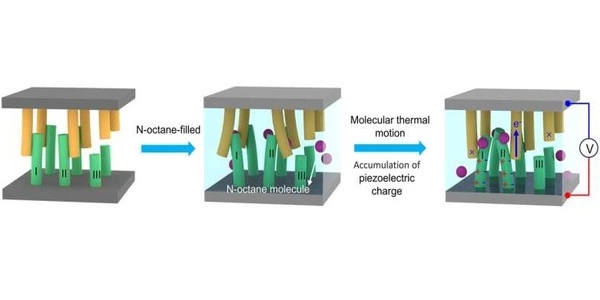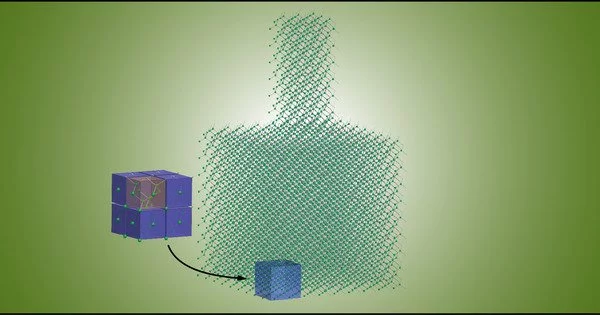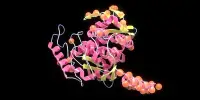Harnessing molecular power for nanoscale electricity generation is an intriguing and rapidly evolving field of study. Nanoscale materials and structures have distinct properties that can be used to convert different types of energy into electrical power.
A molecular energy harvesting device that captures energy from the natural motion of molecules in a liquid was tested by researchers. Their research demonstrated that molecular motion can be used to generate a stable electric current. To make the device, they submerged nanoarrays of piezoelectric material in liquid, allowing the movement of the liquid to move the strands like seaweed in the ocean, except the movement is on a molecular scale and the strands are made of zinc oxide. When the zinc oxide material waves, bends, or deforms under motion, it generates electric potential.
Although wave energy technology is a proven source of energy generation, there is power inherent in every molecule of liquid on the planet, even when the liquid is at rest. Atoms and ions are constantly moving at the molecular level. If this nanoscale movement can be harnessed, it has the potential to be a significant source of energy.
“There are vast amounts of air and liquid on the earth, and their successful harvesting could produce a gigantic amount of energy for society,” Yucheng Luan, the author of the book, said.
As a well-studied piezoelectric material, zinc oxide can be easily synthesized into various nanostructures, including nanowhiskers. A nanowhisker is a neat and orderly structure of many nanowires, similar to the bristles on a toothbrush.
Yucheng Luan
Luan and his colleagues tested a molecular energy harvesting device that captures energy from the natural motion of molecules in a liquid in an article published this week in APL Materials by AIP Publishing. Their research demonstrated that molecular motion can be used to generate a stable electric current.
To make the device, the researchers submerged nanoarrays of piezoelectric material in liquid, allowing the movement of the liquid to move the strands like seaweed in the ocean, except the movement is on an invisible, molecular scale, and the strands are made of zinc oxide. The zinc oxide material was chosen for its piezoelectric properties, which means it generates electric potential when it waves, bends, or deforms under motion.
“As a well-studied piezoelectric material, zinc oxide can be easily synthesized into various nanostructures, including nanowhiskers,” Luan said. “A nanowhisker is a neat and orderly structure of many nanowires, similar to the bristles on a toothbrush.”

Their energy harvesters could power nanotechnologies such as implantable medical devices, or they could be scaled up to full-scale generators and kilowatt-scale energy production. The device’s key design feature is that it does not rely on external forces, which increases its potential as a game-changing clean energy source.
“Molecular thermal motion harvester devices do not need any external stimulation, which is a big advantage compared with other energy harvesters,” he said. “At the moment, electrical energy is primarily obtained through the use of external energy sources such as wind energy, hydroelectric energy, solar energy, and others.” This work opens up the possibility of generating electrical energy from the internal energy of the physical system, which is fundamentally different from ordinary mechanical motion.”
The authors are already working on the next phase of their design to improve the energy density of the device by testing different liquids, high-performing piezoelectric materials, and new device architectures and by enlarging the device.
“We believe this novel kind of system will become an indispensable way for human beings to obtain electrical energy in the near future.”
















